| |
|
|
| |
Mira Mar Veterinary Hospital
|
|
| |
|
|
| |
|
|
| |
|
|
|
|
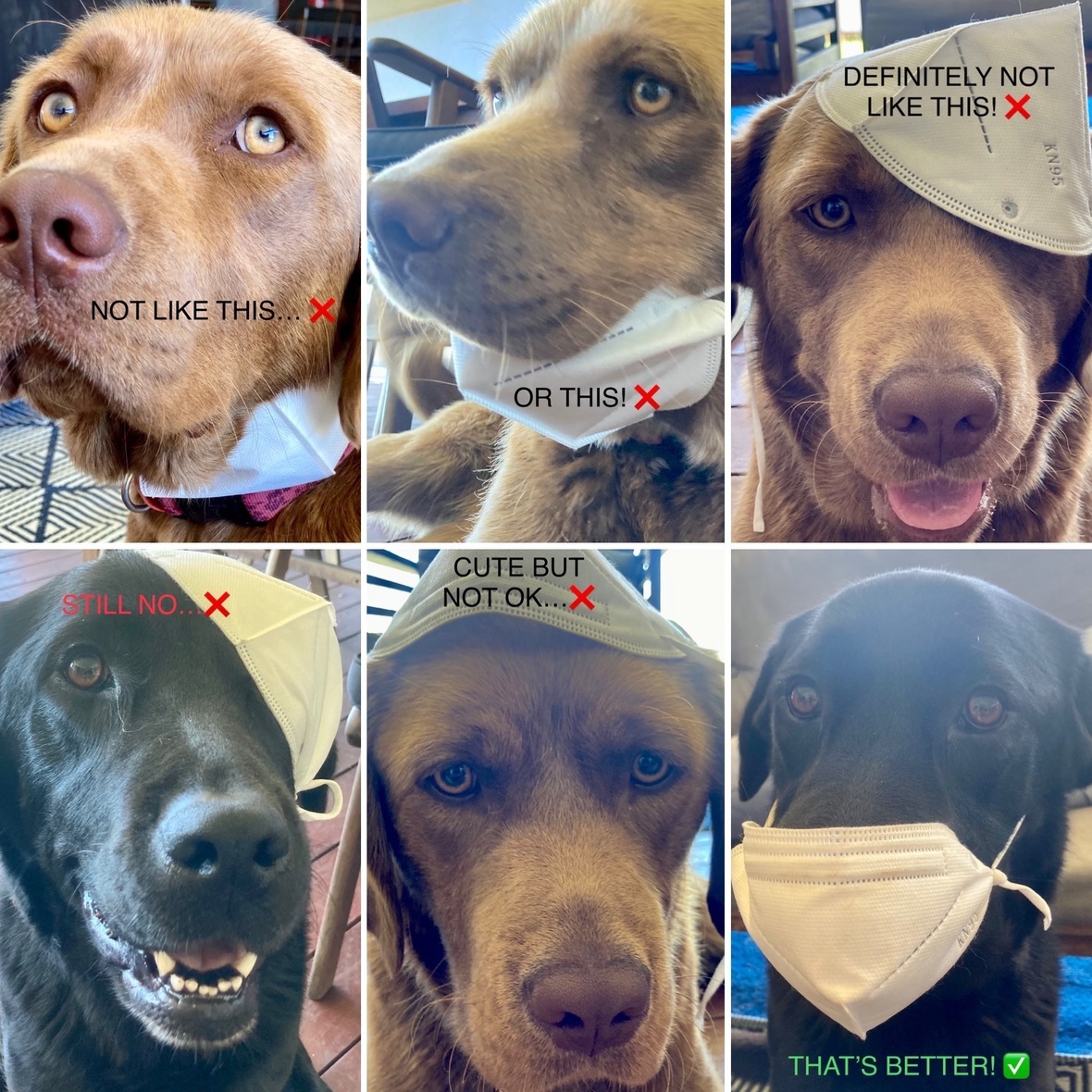
|
| |
Mask Wearing Requirements at Mira Mar Vets
|
|
| |
|
|
| |
Hazel and Alice are shown here modelling the very latest in mask fashion as a reminder to our clients and friends that all people who enter Mira Mar Vets are now required to wear a mask. ������
Let’s hope our clients can do a better job of it than the dogs! (Although it’s clear that they will do just about anything for treats!)
We are all trying to navigate these tricky times to the best of our abilities, so please be kind if things are taking a little longer than usual. |
|
|
|
| |
Farewell Andrea & Farand
|
|
| |
|
|
| |
Visitors to the clinic this year may have noticed that the smiling face of Andrea is missing from behind the front desk! Andrea has moved on to new endeavours for 2022, and we wish her every happiness and success. We also want to thank her for 4 years of stellar veterinary nursing, her awesome laugh, and for keeping us all organised!
We also say a sad farewell to Dr Farand, who has been our semi-permanent locum vet over the past 18 months. Farand is off to explore Australia, and we will miss his huge presence in our clinic, the constant references to Aquaman (!), and his excellent veterinary skills. |
|
|
|

|
| |
Puppy Preschool kicks off for 2022!
|
|
| |
|
|
| |
Puppy Preschool has kicked off with a bunch of very cute puppies graduating early this month. Veterinary Nurse Jodie has taken over the reins, and her first class was a great success!
Congratulations to Banjo, Bella, Honey, Molly and Pip for being so fun and well behaved.
Please call the clinic on 98415422 to book your puppy into Puppy Preschool! |
|
| |
|
|
| |
Book Now
|
|
|
|
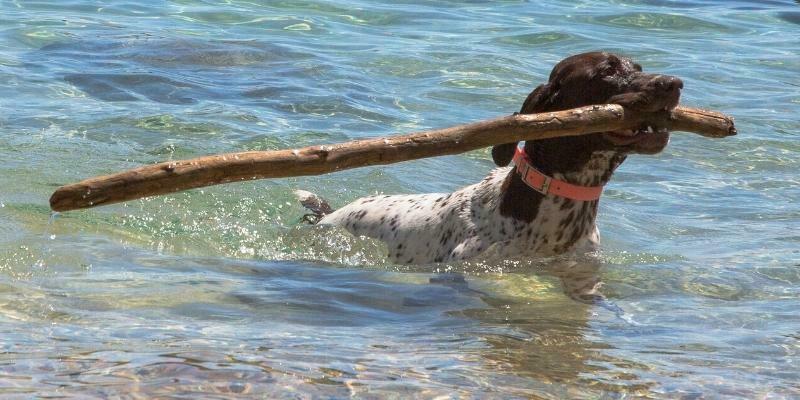
|
| |
Mental stimulation and exercise for dogs
|
|
| |
|
|
| |
Keeping your dog healthy doesn’t just involve ensuring they’re medically well. Ideally, it also includes a routine of regular physical exercise, mental stimulation and quality social time that will help them to thrive!
Physical exercise
Most dogs should go for at least one walk daily. Very active or working breeds, however, require regular off-leash running time, energetic games of fetch, or “structured” challenges, such as agility training. Reputable doggy daycare or dog walking services can also be a great way to ensure your pet is exercised, even if you need to be at work!
For active breeds, it helps to have a large yard where your dog can perform “zoomies” to their heart’s content, but this isn’t essential if you’re happy to take them out for exuberant exercise once or twice daily.
Mental stimulation
For any dog, providing some “brain training” games is a great way to keep them busy and tire them out in a non-physical way. It can also help slow down age-related brain deterioration in older dogs.
Active breeds can particularly benefit from “work-like” activities, such as obedience training or Nosework, which directs their high energy towards positive endeavours rather than destructive behaviours.
Any dog being left alone regularly will benefit from a variety of safe interactive toys and treats, such as an automatic ball launcher, stuffed Kong toys, puzzle feeders or treat hunts.
Social time
Dogs are social creatures, so many will fret if they are left alone for long periods.
Having two or more bonded dogs can be a good solution but, if you don’t want another pet, then ensuring good social contact for your single dog may involve sending them to regular doggy daycare sessions, bringing them to work with you (if possible) or allowing them inside with you all the time when you are home, to ensure they feel like part of the family.
With this kind of care, your dog should feel “paw-sitively” amazing! |
|
|
|
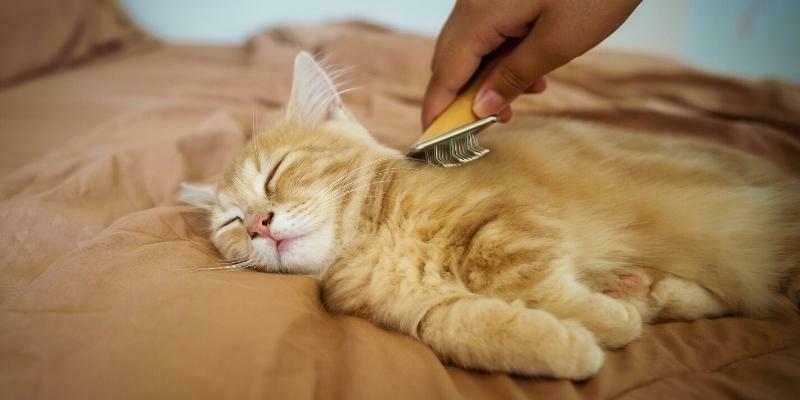
|
| |
Cat grooming and claw trimming
|
|
| |
|
|
| |
Whilst cats are pretty good at taking care of themselves, many domesticated felines still require regular beauty services from their human family members!
Grooming
Most cats benefit from a light brushing session twice-weekly to help remove loose hairs, particularly during seasonal changes when they can shed more fur.
However, long-haired, elderly or obese cats may require daily grooming assistance to prevent mats, particularly around their bellies, bottoms, tails and legs. This involves a slicker brush or de-shedding tool to remove loose hairs, as well as careful combing to remove knots. Any mats should be trimmed off with pet-safe electric clippers rather than scissors.
Ask our team for help if you’re having trouble keeping your fluffy cat sufficiently groomed. In these cases, we may discuss a twice-yearly “lion clip” for them, which will minimise any home grooming requirements (and looks adorable). This is performed under light to moderate sedation to prevent any undue stress.
Claw trimming
Largely indoors or elderly cats will generally require claw trimming every two-to-three months to prevent painful claw overgrowth. If you’re unsure how to safely trim your cat’s claws without hurting them, our friendly nursing team can provide you with a demonstration. It can also help to check out this general claw trimming advice on the International Cat Care website.
Depending on your cat’s temperament, we recommend either distraction with a tasty lickable treat pouch or gentle restraint by wrapping them in a thick blanket (called a “purrito!”) to peacefully achieve claw trimming. If your cat is uncooperative, give our team a call to discuss the best option for your pet (usually a combination of gentle sedation and claw trimming by our experienced staff).
With your assistance, your cat will be looking “purr-fectly” groomed in no time! |
|
|
|
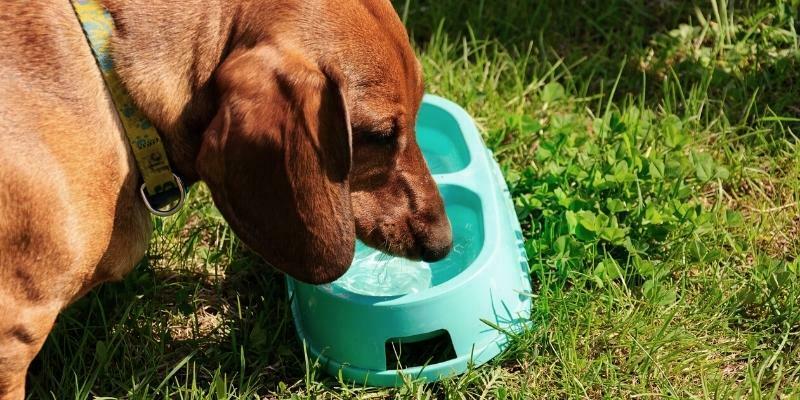
|
| |
EDUF is the ABC of good health!
|
|
| |
|
|
| |
Whilst a lump or a limp is generally quite obvious, some pet health issues can be more subtle, particularly in the early stages.
Potentially sneaky health issues include organ diseases or hormonal imbalances, which can come on gradually. Common internal issues that can start quite subtly include:
- Chronic kidney disease
- Hyperthyroidism in cats
- Cushing's disease in dogs
- Heart disease
- Diabetes
Regular vet checks are a great way of identifying these issues, so we recommend annual checks for young pets and six-monthly checks for animals eight years of age or older. Before your pet undergoes any procedure (such as dental treatments), it’s worth requesting thorough pre-anaesthetic blood tests to check your pet’s red and white blood cells, and basic organ parameters. It’s not uncommon that we unexpectedly detect early health issues in this way, particularly in older pets.
However, given that your pet spends most of their time at home, it’s really useful for you to be able to monitor some basic health parameters too. As well as keeping an eye on your pet’s general behaviour and looking for any obvious signs of unwellness (such as coughing or weight loss), it also helps to monitor their EDUF.
EDUF refers to your pet’s eating and drinking levels, and the quality and quantity of their urine and faeces. In many cases, we can notice:
- An increased appetite (and potentially weight loss despite this), in cases of hyperthyroidism or diabetes
- Increased drinking and urination in cases of chronic kidney disease, hyperthyroidism, Cushing's disease or diabetes
- Increased defecation in cases of pancreatic insufficiency or chronic gut disease
If you notice any changes in your pet’s activities that concern you, give us a call to discuss whether any further investigation is advised. We guarantee, our friendly team will not be perturbed if you wish to phone us to discuss the state of your cat or dog’s poo! |
|
|
|
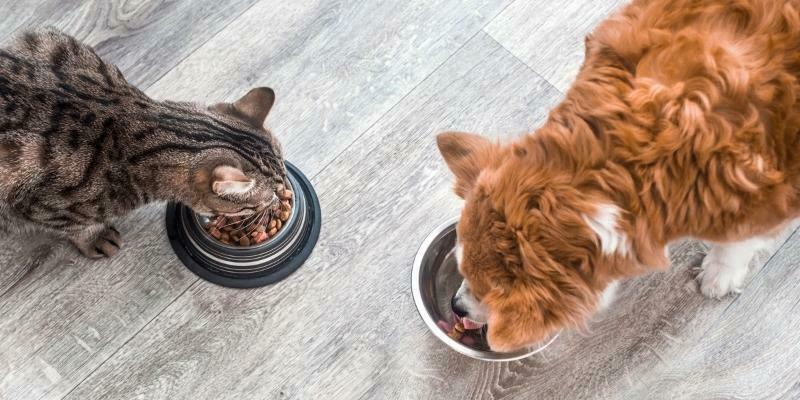
|
| |
Choosing the right food
|
|
| |
|
|
| |
With so many pet foods on the market claiming to be the healthiest and best, it can be hard to know what to feed your pet!
In most cases, our vet team will recommend that you feed your pet a premium commercial veterinary brand food, formulated for their particular life stage, at least for the majority of their diet. We are confident in recommending these foods as they fulfil World Small Animal Veterinary Association (WSAVA) Global Nutrition Committee guidelines for high-quality, balanced diets that are safe for pets. This means they:
- Are formulated by certified PhD nutritionists, food scientists, technicians and veterinarians to ensure that they are complete and balanced for long-term usage
- Are created with ingredients and processes that adhere to strict food safety and quality guidelines, with methodical testing of raw ingredients and finished products
- Have been tested with feeding trials to ensure the long-term health of animals being fed the diet
For pets with specific nutritional needs (e.g. those with a sensitive stomach, food allergies or kidney disease), we recommend the prescription veterinary brand foods, formulated to support your pet’s condition with scientifically-based nutritional adjustments or supplements.
On occasion, our vets may advise that an individual pet be trialled on a completely home-cooked diet. This may be recommended temporarily (e.g. for animals recovering from a bout of gastrointestinal or pancreatic upset), or for long-term usage (e.g. in animals with very specific dietary requirements due to chronic medical issues, who can’t eat available commercial prescription diets). In cases of long-term home-cooked diets, we recommend you see a certified veterinary nutritionist service, who can guide you on ensuring that your pet’s diet is complete and balanced in micronutrients (vitamins and minerals), as well as macronutrients (protein, fat and carbohydrate levels).
If you are unsure about the best diet for your pet, have a chat with our knowledgeable team for more personalised recommendations. We’re “mutts” about good nutrition! |
|
|
|
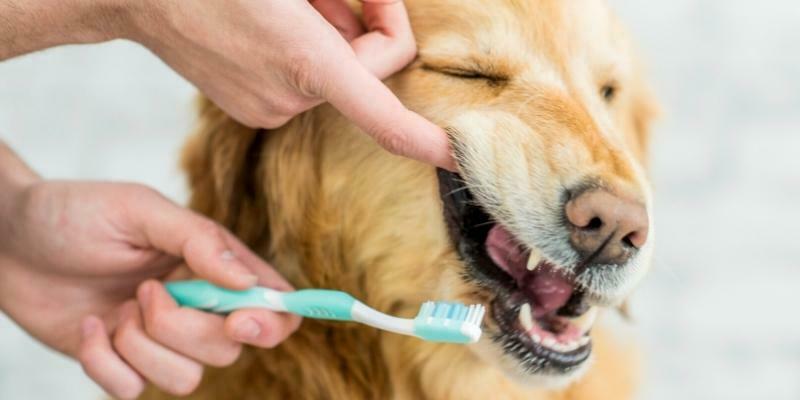
|
| |
How to brush your dog’s teeth
|
|
| |
|
|
| |
Whilst veterinary-approved dental diets, chew treats, and oral health supplements can help control your pet’s tartar and plaque levels, daily brushing remains the best way to keep their gnashers healthy!
Why is brushing best?
Brushing cleans all surfaces of your pet’s teeth by light mechanical abrasion, which is the best way to remove the sticky plaque film that naturally forms on teeth each day. Over 48 to 72-hours, undisturbed plaque will harden to tartar that adheres to your pet’s teeth – this can only be properly removed with a dental cleaning procedure at a veterinary clinic.
“Urgh… how can I possibly brush my dog’s teeth?”
We get it – brushing your dog’s teeth may seem like an impossible task! However, with the right approach, most friendly dogs can be trained to accept it.
Before you start, we recommend booking a consultation to have us check that your dog’s mouth doesn’t have any pre-existing dental disease requiring treatment. Otherwise, your dog will be uncomfortable and resistant to the brush-training process.
Equip yourself with some gauze swabs (from a pharmacy) or a light face flannel, plus an extra soft toothbrush (a human toddler toothbrush, or a pet finger-toothbrush), and some small, tasty treats. Proceed by gradually training your pet as follows, with 30 to 60-second daily sessions:
- Week 1: Get your pet used to you lifting their lips, and gently touching all their teeth with your (gauze or flannel-wrapped) finger
- Week 2: Start gently rubbing your pet’s teeth with your gauze/flannel-wrapped finger – even this step will help keep your pet’s teeth cleaner!
- Week 3: Work up to gently brushing your pet’s teeth with the moistened toothbrush
Ensure that you reward your pet with a treat and lots of praise every five seconds or so during the session, to keep things positive.
With some gentle persistence, you and your pet will be brushing with the best of them, and that’s the “tooth”! |
|
|
|
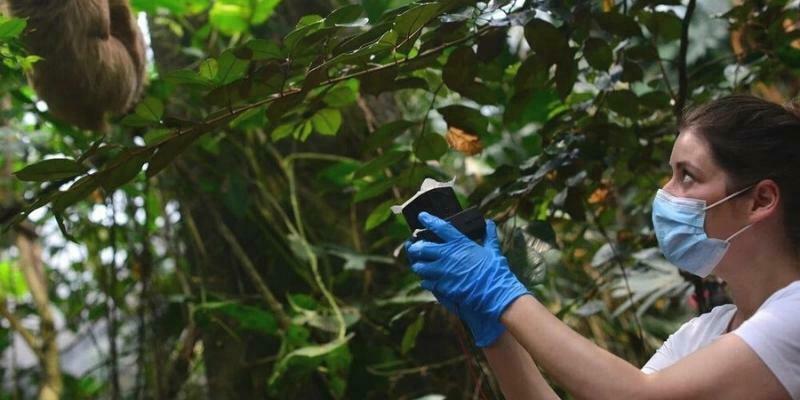
|
| |
DNA is in the air
|
|
| |
|
|
| |
Image sources: Smithsonian Magazine
You’ve heard of DNA, but how about eDNA? eDNA, or ‘environmental DNA’, are tiny fragments of DNA that can be non-invasively collected through air or water in order to detect animal species.
Typically, wild animals are either surveyed indirectly, through traces left behind, such as fur, feathers or feces, or through sight. This means traditional methods of wildlife surveying can often miss the smaller, faster or shyer animals.
All living organisms, however, shed DNA into their environment, so the excitement surrounding airborne eDNA is due to its potential ability to measure biodiversity in tricky-to-access places, like burrows or caves.
Two independent studies of eDNA have been recently conducted by separate research groups in Denmark, the United Kingdom and Canada.
The first eDNA study, carried out last year in England’s Hamerton Zoo Park utilised 70 small filters to essentially vacuum DNA “out of the sky,” according to study lead and geneticist Elizabeth Clare from London’s Queen Mary University.
The second study, led by genomicist Kristine Bohmann from the University of Copenhagen, compiled 40 air samples in three areas of Copenhagen Zoo. The samples, collected via sterilised water or paper filters, sought out free-floating genetic material like fur, faeces and saliva.
Despite being conducted separately, both papers produced what Texas Tech University eDNA researcher Mark Johnson called “really, the same results,” and demonstrated great success against their hypotheses. “We had no idea that this would actually work so well,” said Bohmann.
Now published in the journal Current Biology, the studies hold the prospect of airborne eDNA revolutionising the very study of biodiversity, offering a future where scientists might just be able to take their collected filters of air and “diagnose a jungle,” according to Clare.
Read more about eDNA from Smithsonian Magazine. |
|
|
|

|
| |
Animal News In Brief
|
|
| |
|
|
| |
Eel migration path
Image source: the ABC
Eels are a whole other kettle of fish
If you’ve ever considered a long-distance relationship, you probably have more in common with eels than you know, as it turns out going the distance is what eels do best. Not only do eels begin their lives in the middle of the ocean as larvae that become tiny transparent squiggles but, at less than 30 centimetres in length, they prepare themselves for an epic journey swimming thousands of kilometres in search of a home. Once they reach a river mouth and move from salt to freshwater, they begin growing into the thick, snakelike eels of up to 1.7m in length that we see swimming in our riverbeds. Not only do eels go above and beyond to find a home, they travel that same exhausting distance back out to sea when they’re ready to mate - and it turns out the trek doesn’t just consist of swimming either. Eels can crawl across dry land from just the tiniest bit of water and still keep oxygen in their bloodstream to breathe, just by manoeuvring their slime and scales. In fact, eels are so adamant about getting to where they need to go that they can even make their wriggly bodies climb up walls and waterfalls! Researchers from the Arthur Rylah Institute recently recorded groundbreaking information from tracking devices they attached to a group of short-finned eels. The tracking technology followed the eels as they swam all the way from a western Victoria river, right out to the Coral Sea, near New Caledonia. That’s about a 2,620 kilometre trek, just to return to their breeding grounds! As discoveries like this continue to unfold, we can appreciate that what we may have thought was a rather simple life for these slippery fish is “eely” rather complex.
Read more about the lives of eels from the ABC.
-----
Vet lends a paw to the pets of the homeless
Empathy never falls short in a veterinary practice. This notion is no less true for the solo US vet who spends his time walking through the streets of downtown Los Angeles dubbed ‘Skid Row’, offering his veterinary expertise to the pet parents experiencing homelessness. Many of Skid Row’s residents had never experienced veterinary care before, as Dr Stewart recalled frequently receiving looks as though he “just dropped out of the sky.” Pets play a pivotal role in our lives, and this is no different for those experiencing homelessness. Dr Stewart said that “pets were a lifeline” to the people he encountered, giving them a sense of structure, as well as purpose and love. Dr Stewart found Skid Row’s residents to be “great pet owners” who “made sacrifices for [their pets] well beyond what you or I would,” putting the bond between the pet and owner “on a completely different level.”. These acts of kindness by Dr Stewart are a great representation of the unwavering commitment and compassion veterinarians put into their job every day, for every paw that needs a helping hand.
Read more about Dr Stewart from Smithsonian Magazine.
-----
Rewilding projects take off in the UK
While property development and agriculture around the globe spur ongoing deforestation and habitat loss, a little glimmer of hope is emerging in the United Kingdom from various successful rewilding projects. Bison, beavers, frogs and grasshoppers, along with a variety of flora, have been reintroduced across the island nation with the intent to restore biodiversity in vital ecosystems. Spring of this year will see four wild bison, Europe’s largest mammal, set up home in Kent in an effort to grow bison populations and re-enrich woodlands after hunting and habitat loss drove the gentle giants out of the UK 6,000 years ago. Beavers have similarly been top of the rewilding project list for the UK, with the little dam dwellers contributing essential support to their surrounding species by reducing flooding, increasing water retention and reducing silting. On the other side of the pond, white rhinos have been introduced to Akagera National Park in Rwanda for the first time. We can hope these global efforts will spark national interest and encourage the Australian government to take greater action to repair and protect Australia’s highly vulnerable native ecosystems.
Read more about the UK’s rewilding projects from The Guardian. |
|
|
|
| |
This email contains comments of a general nature only and is not intended to be a substitute for professional veterinary advice. It should not be relied on as the basis for whether you do or don't do anything.
All content © PetPack 2022 |
|
|
|
[Footer]
|